afloat
Anne Neukamp in Collaboration with Towards
afloat by Anne Neukamp is the result of a year long collaboration between the artist, and towards. Comprised of two main components, afloat encompassed a month long installation at Jr. Projects, as well as a publication by the same name. Both the installation and the publication can be viewed as a continuation of Neukamp’s exploration of strategies to destabilize the image. Through processes of sampling, translation, fragmentation, and transferal, Neukamp mines contemporary visual culture to create a project that hovers “back and forth between material content and spatial imagination.” 1
The publication includes eighteen unique compositions Neukamp has created exclusively for towards. Initially taking the form of a collated booklet, the viewer can flip through the publication much as he or she might read a traditional newspaper. However, when the viewer unfolds the publication completely, the spreads reveal themselves as individual posters which can be viewed as discrete objects. Alongside these new prints is an original essay by Birgit Effinger.
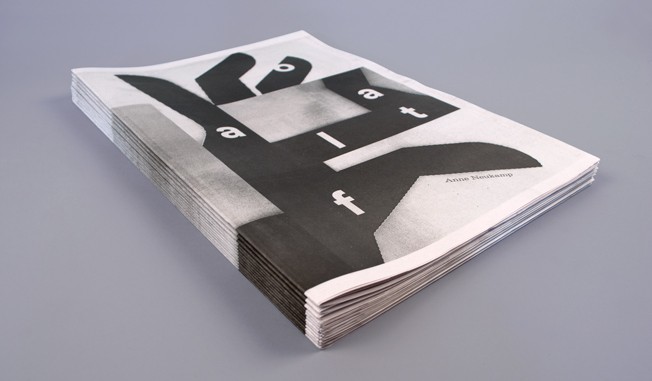
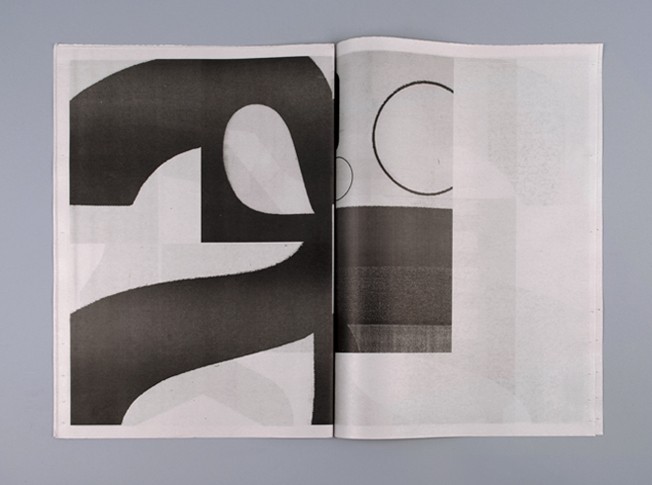
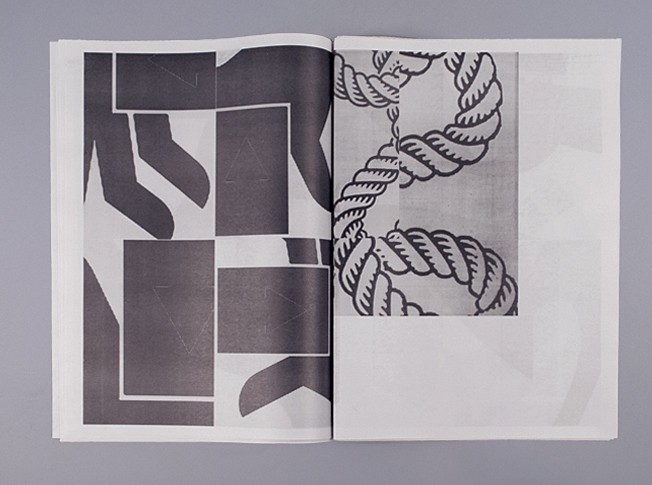
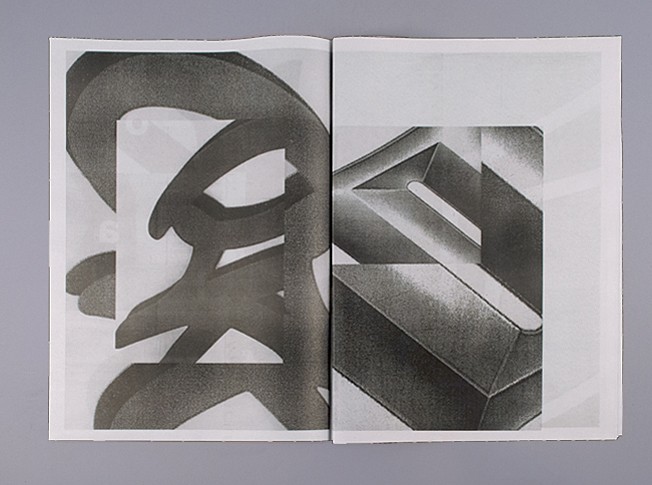
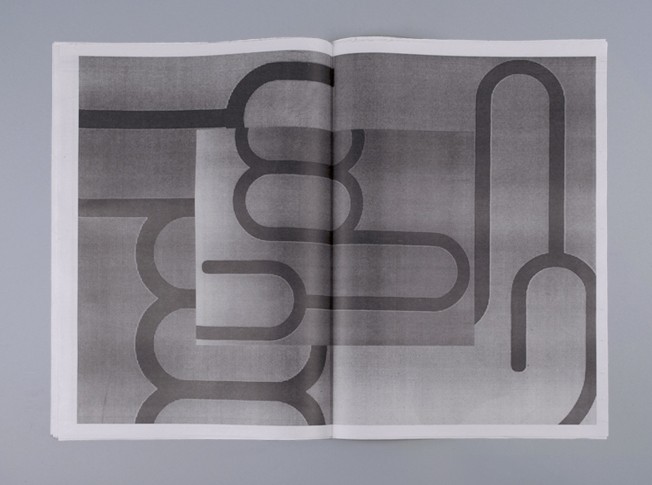
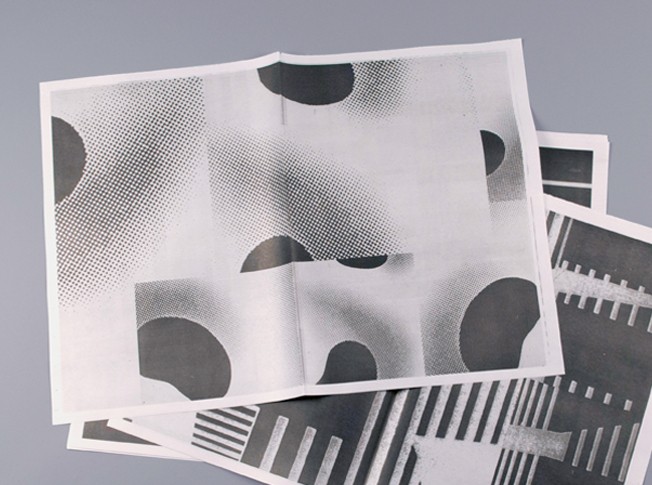
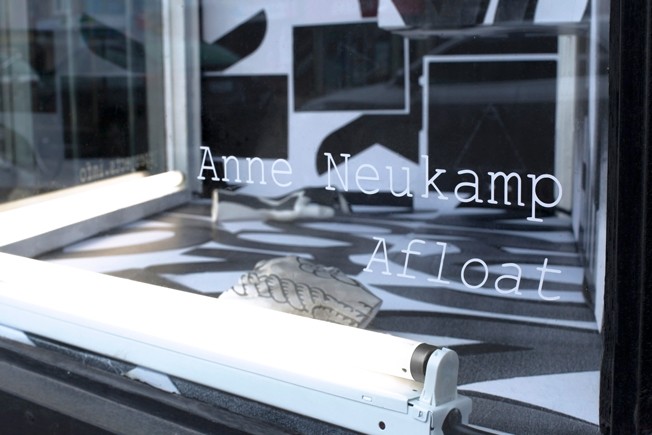
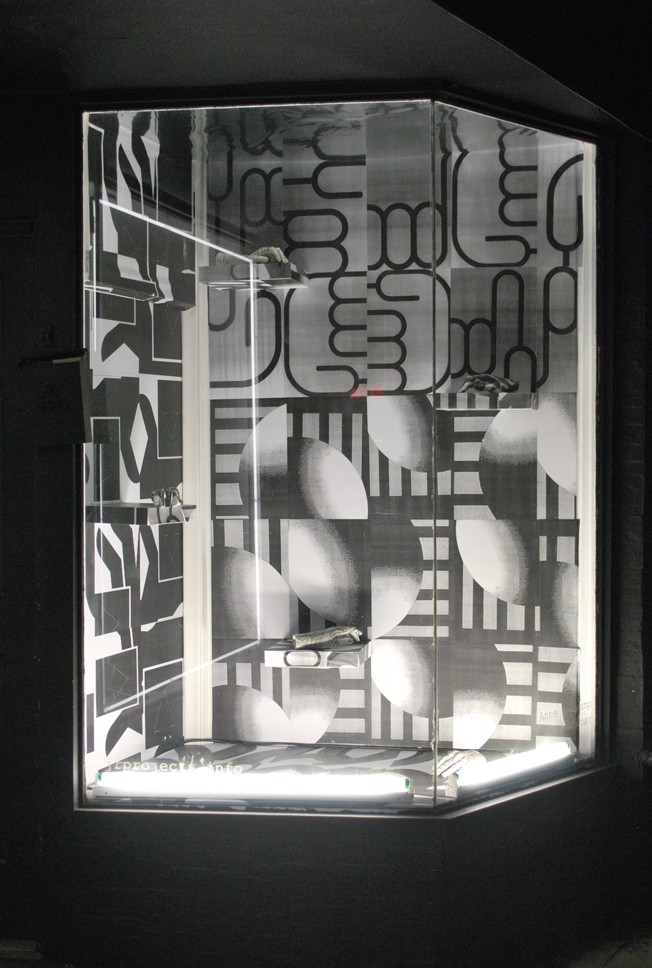
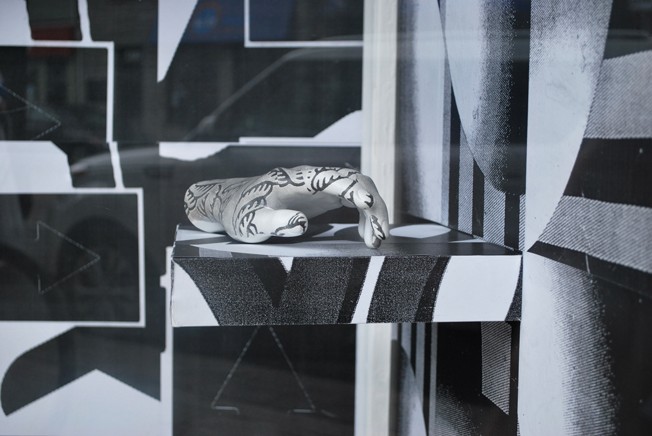
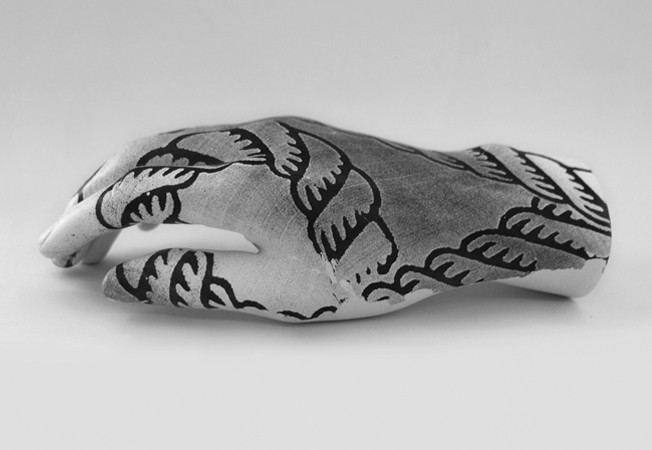
afloat
by Birgit Effinger
Light, mobile, affordable, an open series: this publication will possibly be picked up at home, perhaps on a train, in a hotel, maybe in a waiting room, on a beach, or in a museum. The borders between the locations that allow us experiences of text and image are neither hermetic nor rigid. In all likelihood, in several years there will probably be entirely other spheres for the perception of many different forms of expression. “They exist already,” some will yawningly object, thinking of the plethora of streams of data, the blurring distinctions between transmission and real-time experience — or Pinterest, and all the other tools available.
Underway at home, at the bus stop: in the maelstrom of everyday image searches, it has become commonplace to say that visual strategies and inventions are neither bound to a fixed form, nor to physical presence or even sites. Our image machines increase constantly and the corresponding circles of distribution proliferate — see Pinterest, Instagram, Flickr, Tumblr, etc. All the same, we have seen that the mechanisms of representation associated with this are not necessarily more complex, but can also become increasingly banal. The permanent access to image sources has not signaled the end of the print media. Just as, despite all the dystopian visions, television has not replaced the cinema, and the Internet has not replaced the daily newspaper.
You do not need an introductory course in media theory to realize that every medium involves its very own experience of time, and this printed work is less interested in exploring modes of digital distribution or presentation in a museum. Here, temporality, finitude, and a sense of fleeting impermanence come into play, which are not used in a paralyzing, but an activating way. While, if only due to custom, the title page suggests an argument of assertions, the rhythmic sequence of pages sets additional layers of beholding in motion, which evoke serial, cinematographic, pattern-like, and repeatedly momentary, renewing effects. When a sense of unrest and permanent disturbance takes the place of statements, opinions, and instructions, I myself need to become active, to read in or out of my own thoughts, develop my own notions, and call up my own store of images. Or, alternatively, I could fold the publication into a paper airplane or clean the windows with it: these also remain possibilities.
The combination of a newspaper’s tactile characteristics combined with the pictoral decisions, the play with repetition, similarity and difference, and not least, the interplay between the apparently precarious material and the precisely composed surface structure shape this subtle object of attention, more precisely: objects, for after all it is one in a mass edition. It’s no accident that this has been published along with an edition of printed mannequin hands. For it is only the movement of the hand that sets constellations in action that can reversibly alternate and exclude hierarchies as well as the categories above, below, inside and outside. A unique mélange of fragments of reference and form, and material free of meaning begins to spread. It is like living in a room that can be passed through, where it’s not clear whether it’s open or closed.
This publication is intended as an aesthetic interaction that is neither committed to a claim of its own universe, nor to the pattern of a certain narrative. As a simple model, it refers to a broad web of networks, inside which their visual motifs circulate: billboards, streets, copy shops, galleries, screens, paper, supermarkets, and gas stations. The visual motifs are each components of Anne Neukamp’s work materials and were adapted here into new visual chains of reference. The vagabonding material has long begun its journey in countless processes of translation from the Internet page via the screenshot and digital print out to the copied section of a picture and analog growth of points in an offset print. Now the visual motifs pass as traces of the meant and the seen, steeped in homeopathic dosages of commercial interests, various materialities, forms and effects.
In producing this booklet, we asked ourselves at times whether there is a visual currency that continually survives the entire transformation of the media and the genealogical steps of transfer. And if this currency exists, who takes on the role of the monetary fund? Or is it rather that the valences of the visual shift and that experience and knowledge is wrested from the transformed material, despite its origins as commodity? afloat is thus a test of stamina, that condenses and overtax the motifs so long until they insist on the dull, obstinate meaning of materiality to reveal the unforeseen. Between saying and showing, something reveals itself: this process is called evidence.
Order your copy of afloat via Art Metropole. For enquiries regarding the artist print hands, or for wholesale publication questions, please contact kevin@towards.info
Documentation of installation by Parker Kay.